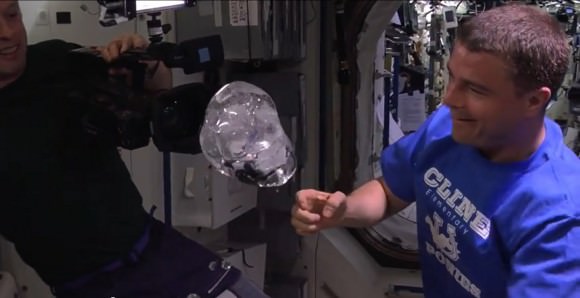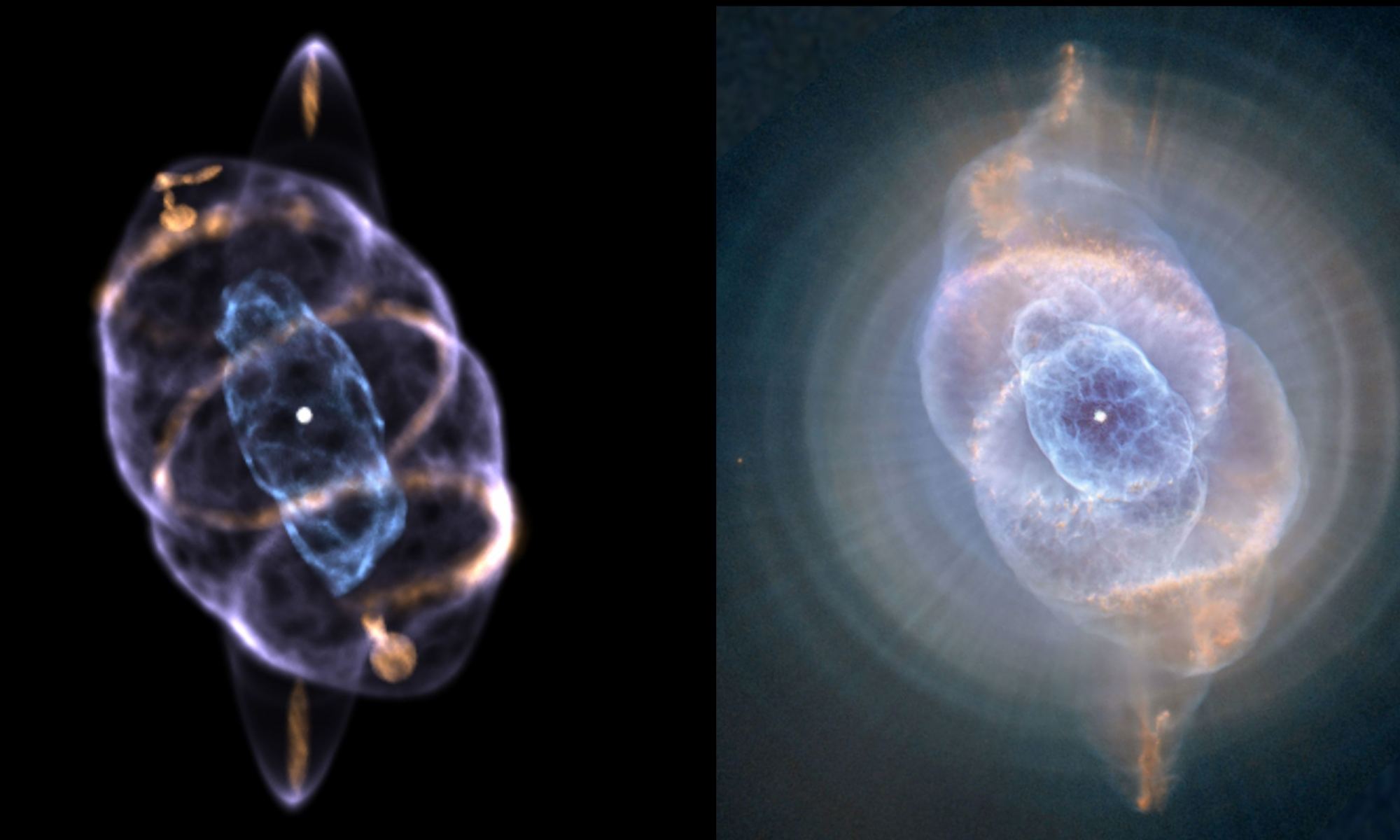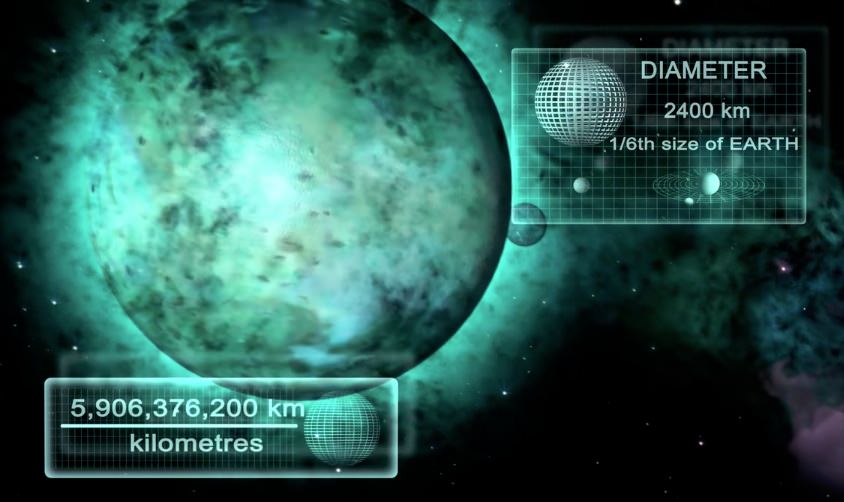In a recent study published in Monthly Notices of the Royal Astronomical Society, an international team of researchers led by Stanford University have produced the first computer-generated 3D model of the Cat’s Eye Nebula, which unveiled a symmetric pair of rings that enclose the outer shell of the nebula. This study holds the potential for helping us better understanding the nebula’s makeup and how it formed, as the symmetric rings provides clues that they were formed from a precessing jet, which produces strong confirmation that a binary star exists at the nebula’s center.
Continue reading “Astronomers Simulate the Cat’s Eye Nebula in 3D”Giant Water Bubble Engulfs Video Camera On Space Station, With Hilarious Results

What does the view look like from inside a water bubble? Earlier this year, astronauts on the International Space Station completely submersed a GoPro video recorder inside liquid and filmed the view — which is quite amusing.
Look below for some distorted views of then-Expedition 40 astronauts Reid Wiseman and Alexander Gerst … and an awesome 3-D video besides!
NASA’s goal in tasking the astronauts with this is to better understand how water behaves in space. (It’s actually quite a serious matter, as a lack of understanding of the physics was one factor leading to a dangerous water leak during a spacewalk in 2013.) In this case, the astronauts were looking at how surface tension works in microgravity.
As for that 3-D video, the agency says it is going to offer more of these from space as it gets people even closer to actually being there. Here’s a neat phenomenon: typically the higher radiation levels in space damage video cameras to the extent where they need to be replaced every 8-12 months.
A 3-D camera sent up in 2011, however, had virtually no dead pixels in the images, prompting NASA to investigate. Officials requested the camera come back to Earth on a Dragon splashdown in 2012. That’s when they discovered the way the 3-D camera is structured — with stereo images layered on top of each other — lessens the appearance of any damage.
But there’s also less damage in the first place, NASA said, because the 3-D camera doesn’t use charge-coupled imaging sensors that are susceptible to radiation. The newer system uses a metal-oxide semiconductor sensor, which doesn’t get hurt as badly. We guess that’s more argument for bringing 3-D images from the final frontier.
Source: NASA

Stunning 3D Tours of Two Well-Known Nebulae
Two videos recently released by the Hubble team take us on a tour of two famous and intriguing cosmic objects: the stellar wind-blown “celestial snow angel” Sharpless 2-106 and the uncannily equine Horsehead Nebula, imaged in infrared wavelengths by the HST.
Using Hubble imagery complemented with data from the Subaru Infrared Telescope and ESO’s Visible and Infrared Survey Telescope for Astronomy — VISTA, for short — the videos show us an approximation of the three-dimensional structures of these objects relative to the stars surrounding them, providing a perspective otherwise impossible from our viewpoint on Earth.
The stellar nursery Sharpless 2-106 is above; hop on the Horsehead Nebula tour below:
Continue reading “Stunning 3D Tours of Two Well-Known Nebulae”
Do You Need Some Space?
Of course you do! (Who doesn’t?) And so here’s a wonderful tour of our Solar System to provide you with just the type of space you need.
A 3D animation project by Australian video artist Shane Gehlert, I Need Some Space takes us from low-Earth orbit to the Moon and Sun and then through the lineup of planets in the Solar System, using images and models from NASA to accurately depict their unique appearances. Along the way we’ll get some basic info on the planets, select moons, and a few of the various spacecraft that have visited (or are visiting) each world. Set to an intriguing string score by The Zephyr Quartet (of which Shane’s sister Belinda is a member) I Need Some Space is a mesmerizing 6-minute voyage for any space fan — myself very included.
I particularly like the “ghostly” look of Pluto, reminding us that we still have another year and a half before New Horizons reveals its true appearance to us.
Enjoy! (As with most videos, full-screening and HD-ing are strongly suggested.)
Video © Shane Gehlert/BlueDog Films. HT to FastCoCreate.


